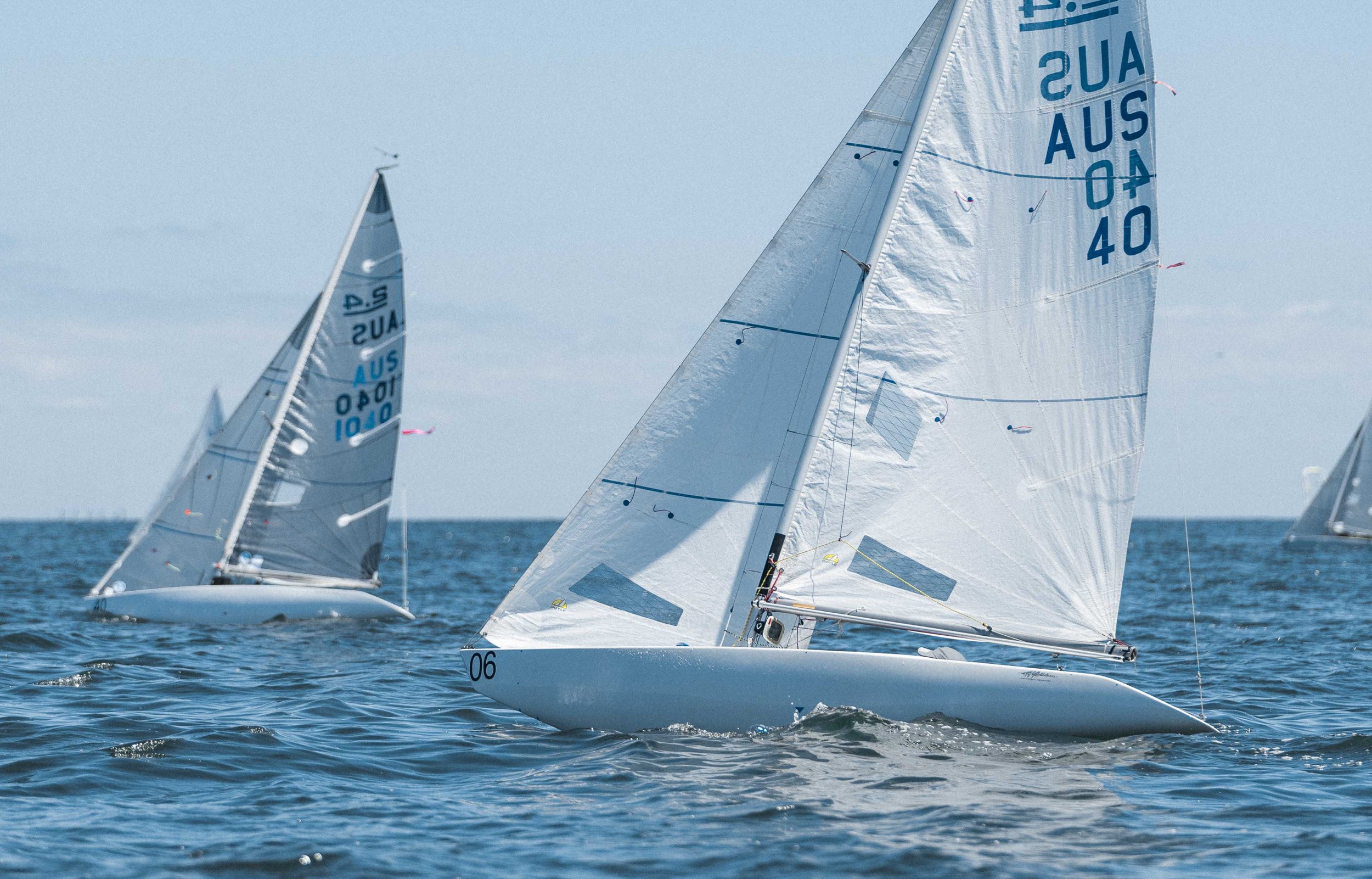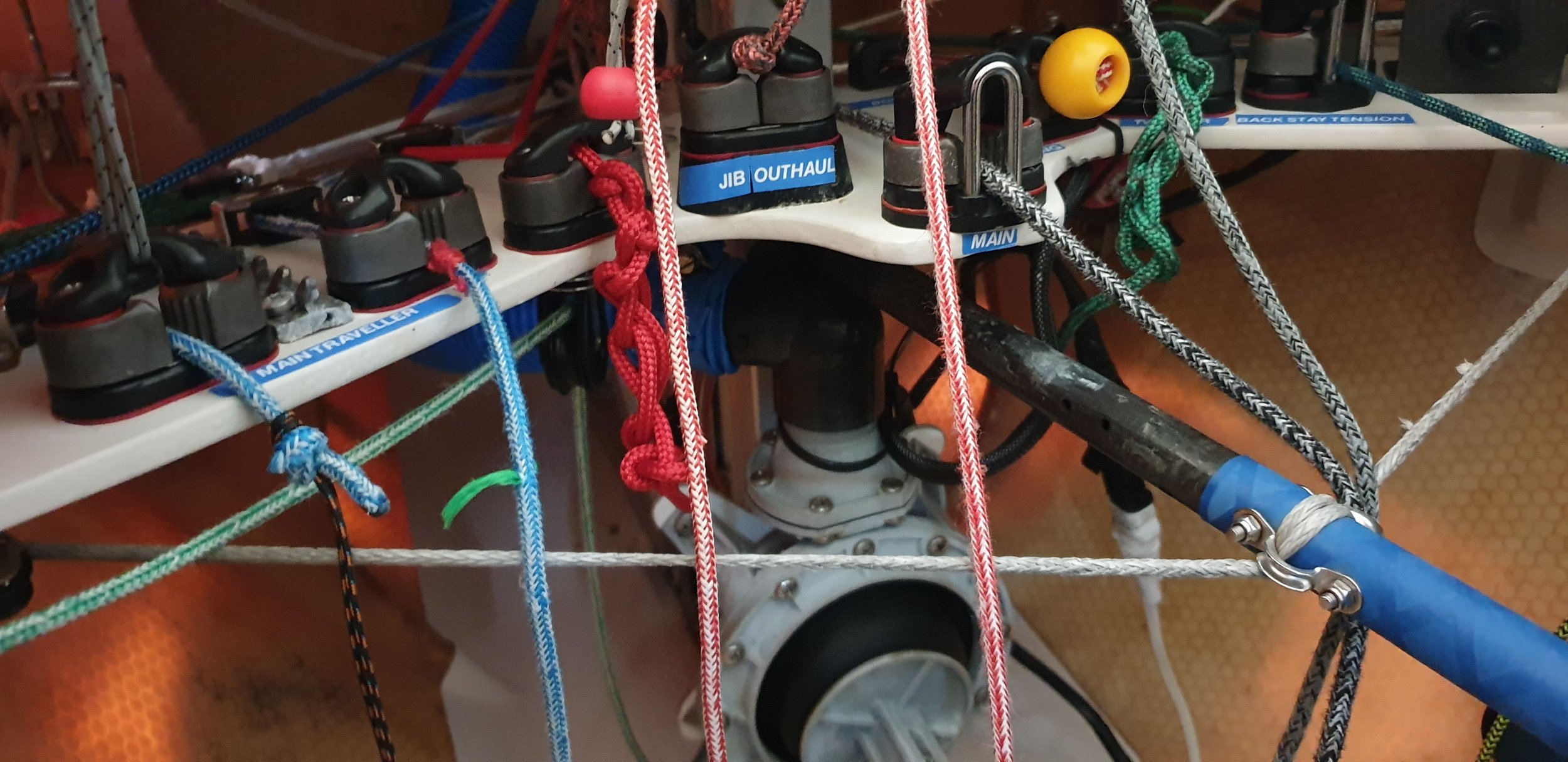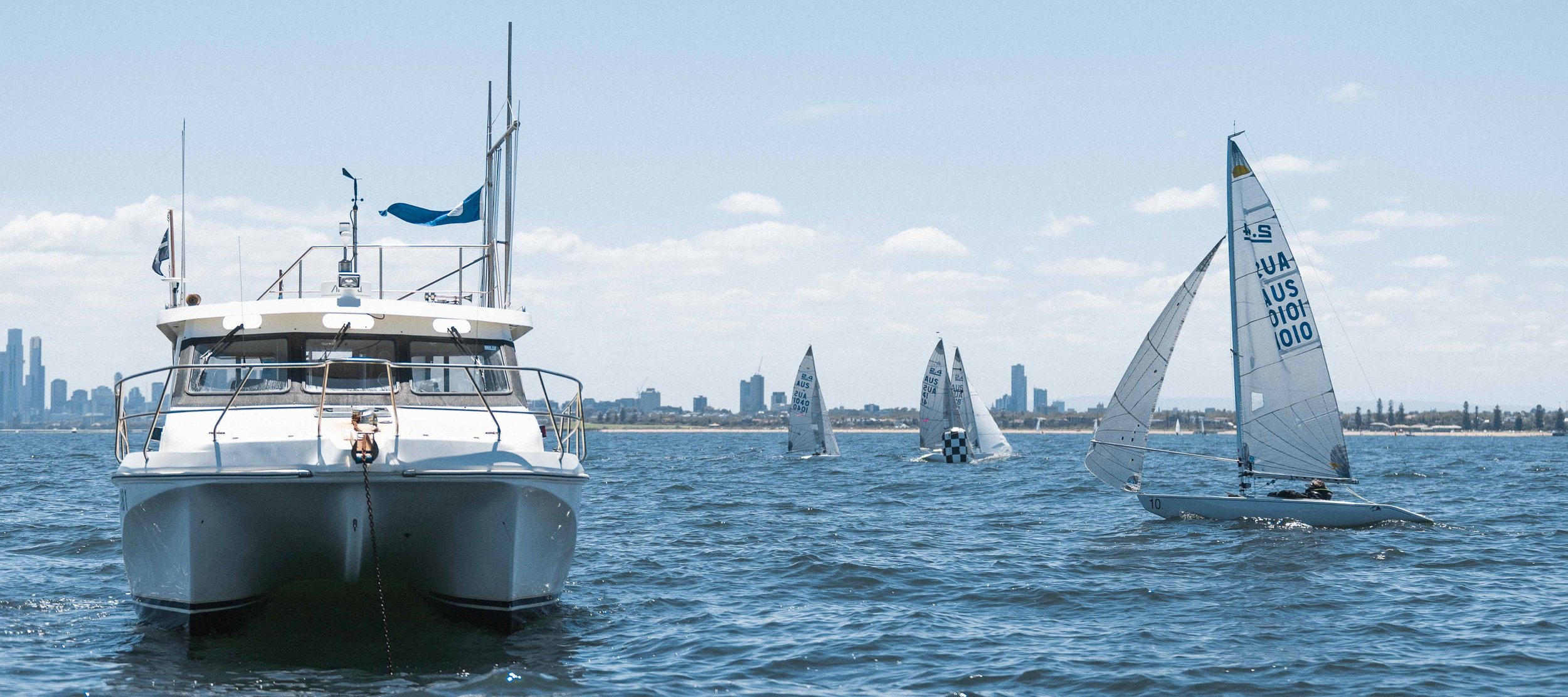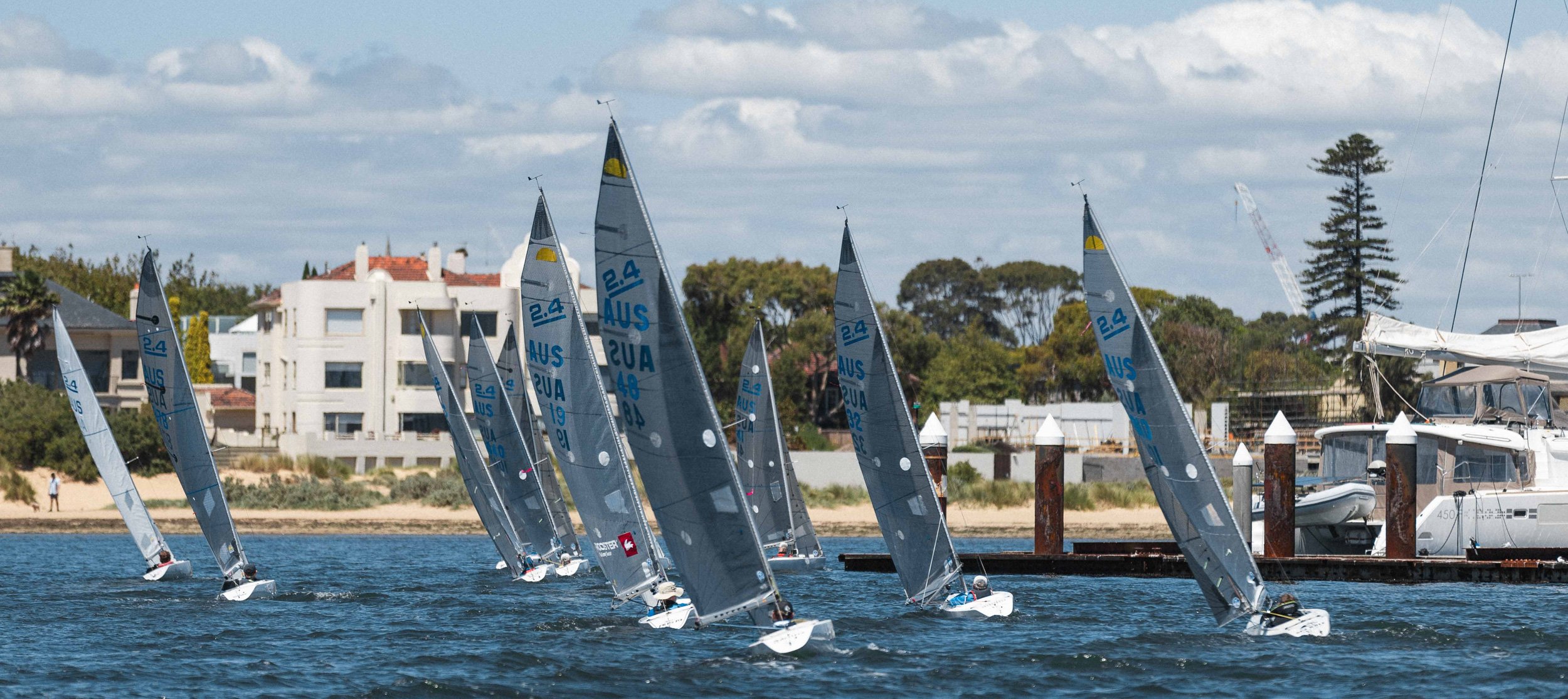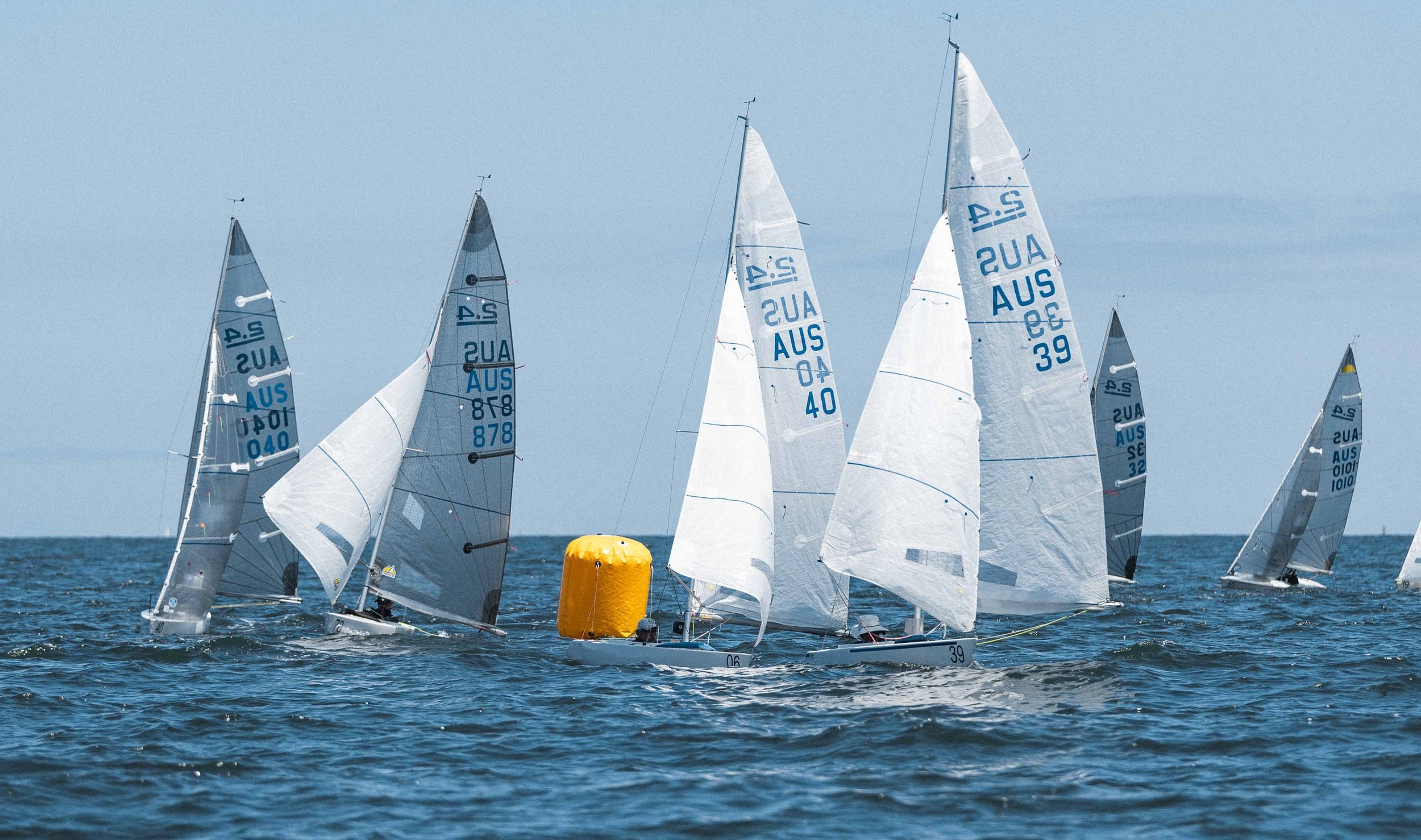2.4mR Australian Championships (2024 - Royal Brighton Yacht Club)
a report by Ray Smith (AUS 43 ‘Emilou’)
The 2.4mR Australian Championships had a record number of entries for the 2024 edition and all competitors arrived at RBYC with much anticipation on the first morning of competition, Friday 26th January. Sadly, the weather gods were not in total agreement. Comments about the ‘bunch of angry sheep in the paddock’ – referring to the significant waves breaking all the way down the bay – with wind gusts measured at Fawkner Beacon of 28knots and occasionally 30+ knots had race management and class representatives discussing the merits of sailing in such conditions. This was a national championship, and we needed to get the races in, but did we really need to bash up the boats on the first day? The postponement flag was raised with the hope that we might get some action later in the day, but things just got worse, and shortly after lunch, all racing was abandoned for the day. Time for some reflection.
ABOUT THE CLASS
The 2.4mR class is a one-person keelboat that offers even the most accomplished competitive sailors a unique opportunity to test their sailing skills. It is governed by the 2.4mR rule, which is controlled by World Sailing (formerly known as ISAF) and is one of the few classes designated as an International Class. The class rule is closely related to the 12mR rule that was used in the America’s Cup and the shape often resembles the 12mR yachts. The 2.4mR is a thoroughbred racer that has the complexity of a sophisticated keelboat, without the high costs, and the fingertip feeling of a dinghy. Often referred to as a “mini-12”, the concept surfaced in several places and forms in the early eighties, most of them where attempts to form one design small keelboats. The fact that the boats were very well suited for disabled sailors gave the class an extra dimension and media coverage, never before had there been a boat appealing to such a wide range of sailors’ abilities. By the end of the eighties the Open 2.4mR Class was established and by 1993 the class was acknowledged by World and granted International Class status. The world championship frequently attracts 80-100 boats, especially when held in Europe. The 2.4mR is a very inclusive class by design. While the 2.4mR rule is very strict about hull design and sail measurement, the boat allows for a range of internal setups for sail trim and steering, which may be either by foot pedals or tiller, or even both. The sailors entered in this Championship regatta included a gentleman with just 9% vision, three guys constrained by being in a wheelchair (on land) and many constrained simply by advancing years!
There are no practical limits to participation, they are easy boats to sail, but require a lot of experience and practice to sail very well. In North America and Europe, women sailors make up large numbers in the respective fleets. We encourage women in Australia to reach out and try sailing a 2.4mR. Disabled sailor and world champion from the UK, Megan Pascoe is one lovely lady who has dominated the class internationally for over 10 years. The fleets in Australia are growing at a good pace with fleets now established in VIC, TAS, WA, ACT, NSW, and a new fleet in Paynseville on the Gippsland Lakes.
RACING BEGINS
Day two of the regatta looked more promising with the weather forecasts suggesting strong winds and significant waves on Port Phillip. Having lost a day due to the very strong winds on day one, the Race Officer, Louise Hutton, brought the start time forward one hour with the aim of doing four races to ensure that we get a result for the Championships. There was much excitement on the hardstand and docks as sailors rigged their sail selection for the day and pushed off.
Rounding the breakwater straight into westerlies of about 20 knots and lumpy sea woke everyone up after the first wave smacked you in the face. There is quite a fetch from the west, indeed all the way from Geelong, so plenty of time for the waves to build. Start line laid, top marks laid, warning signal – it was on! A 2.4mR weighs about 250Kg. Add about 80 or 90 Kg for the crew and you have a lot of ‘stuff’ to drag through the water. The usual starting strategy is to hit the line with speed, but as they do not accelerate quickly you start your run from a little way back. Of course, everyone else is thinking the same thing aren’t they! Anyone sailing a 2.4mR is typically a very competent sailor with lots of experience in other classes, so while we’re in very close company, it is usually a most respectful start line. Banging into 1.5 metre waves made for some interesting approaches and apart from a couple guys who were just a little bit “eager’ and were OCS (On Course Side) the fleet got away cleanly in race one and started bashing into the waves on their way to the top mark. Several boats went onto port tack early as the expectation was for a steady shift to the left and they were not disappointed – arriving at the top mark with a handy lead and extended it downwind. That was the pattern for the afternoon – shifting breeze and choppy sea. In case many of you are not aware, the crew sits IN the boat and does not have to move around apart from shifting their rear a bit, thus making it suitable for people of various abilities. It also has very low freeboard, so anything more than a slight chop, waves break over and into the boat. A full wetsuit or serious foul weather gear is the usual dress code. An automatic electric bilge pump is standard equipment, and this does maintain the water level in the bilge, and when it can’t keep up or the battery goes flat, a heavy-duty manual bilge pump is compulsory equipment. Boats are occasionally swamped but do float at the waterline – this usually ends racing for the day for that crew!
As expected by the rest of the fleet, Para-Olympians Neil Patterson (VIC) and Matt Bugg (TAS) were one and two, with class technical committee chair, Peter Russell (ACT) third. Race two was much like the first – this time a clean start for all competitors and a bit of a procession chasing the top racers at the front. Matt Bugg leading home Neil Patterson and John Collingwood (VIC). In race three, the top contenders for the regatta were pushing a little too hard at the start line and both boats were OCS. Let’s hope that we get enough races in to allow these results to be dropped. The race management team had a difficult time setting the courses due to the shifting breeze and while the plan was to attempt 4 races, resetting the course meant slight delays between races and losing too much time to fit in the fourth. All the competitors were pleased when we headed home after three races. It was hard work in those waves.
As you can see from the photos below, these little boats have lots of adjustments right in front of the crew, and as mentioned, require lots of practice to sail well. Most have at least 10 or 12 control lines coming into the cockpit console. As complicated as it looks, after a while on the water sail trim becomes natural and the labels are unnecessary.
Sunday - day three was not at all like the preceding couple of days. Very light winds from the southwest, predicted to be shifting left during the day. As sailors know, the weather forecast is nearly always correct, it is just the timing that is a bit uncertain. This day however, it was bang on! Another start one hour earlier than scheduled and a target of four races, weather permitting. The crazy ‘washing machine’ waves of the previous two days had relaxed to a beautiful flat sea with bright sunshine overhead. On arrival in the start area, the Answering Pennant (AP flag) was flying signifying a delay in the start. Race management was waiting for the breeze to settle on a direction long enough for a start to be laid. Race one for the day had the majority of the fleet head off on starboard tack towards the shore while a couple of brave souls went out to sea on port. They were rewarded with stronger, more stable breeze and both rounded the top mark well ahead of the rest of the fleet. All they had to do now was stay there! However, the superior skill of Matt Bugg, multiple class champion ran them down and crossed the line first. Races two and three turned out to be similar to race one – light breeze, shifting all over the place, requiring total concentration on your sail trim and the attitude of the boat. The big keel on the 2.4mR will generate lift, so long as you keep it moving with optimum heel angle it will point very high and maintain speed.
Six races constituted a regatta and allowed for a drop, so everyone was pretty happy when Race management called it quits for the day. We had a beautiful day of close racing with flat sea, bright sunshine and more or less steady light breeze. We were all heading home rather satisfied. Matt continued his dominance of the fleet in these conditions and came home with two more wins and taking out his 13th 2.4mR National Championships on just 6 points, followed closely by Neil Patterson on 14 and then Peter Russell on 17.
Well done to the entire fleet, and especially all the volunteers that made this happen. In the 2.4mR regatta, there are almost as many volunteers as there are competitors to make such an event the success that it was – and all of us are most grateful. Thank you. We hope that you had as much fun as we did. Thanks also to the regatta sponsors, Naught Distillery and Protecon. Full race results can be found here - https://rbyc.org.au/2-4mr-australian-championships/ It has been agreed that the next nationals will be hosted by the Gippsland lakes Sailing Club on the lakes at Paynesville, Victoria, 26th January 2025 and we are all looking forward to that.
Ray Smith RBYC - AUS 43 ‘Emilou’ with some background information from the class association.
Images © Nick Smith
